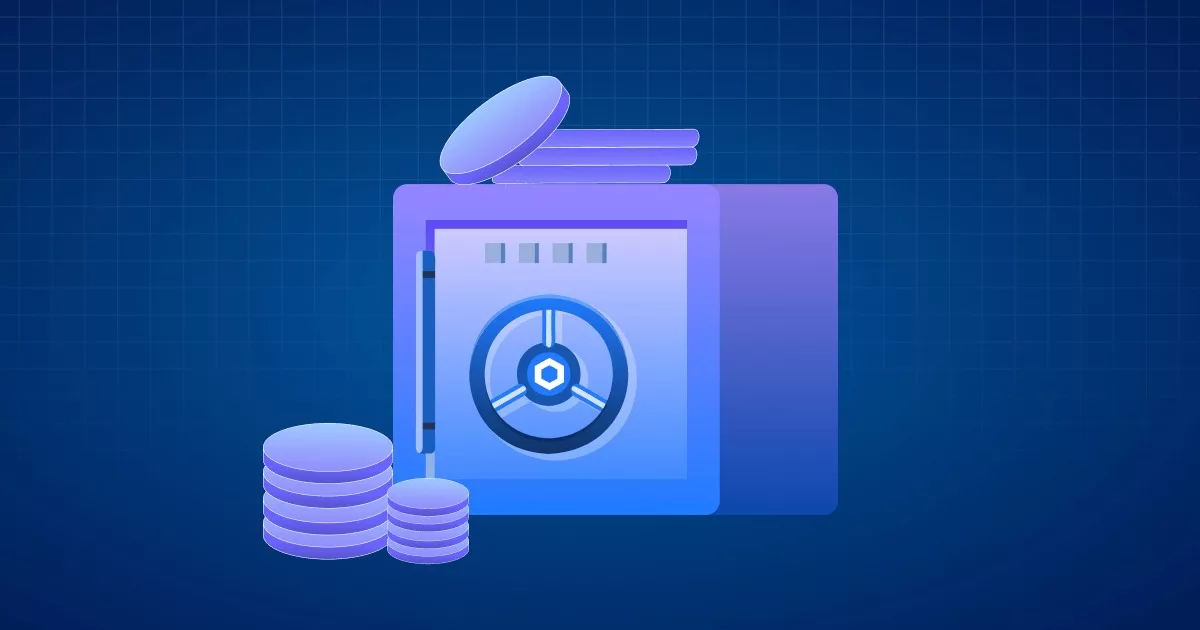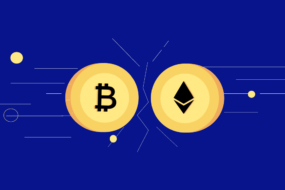
Are you interested in earning passive income through cryptocurrency staking? Chainlink offers one such opportunity.
Chainlink is a decentralized oracle network that connects smart contracts to real-world data and events. Users can stake the Chainlink token ‘LINK’ and start earning rewards.
But how do you stake Chainlink, and what factors should you consider before doing so?
This comprehensive guide will walk you through the steps of staking Chainlink, from choosing a staking provider to securing your tokens and earning rewards.
What Is Chainlink?
Chainlink is a decentralized network that functions as an oracle system. It helps connect smart contracts to the real world by providing reliable, real-time data. Moreover, it is considered the most significant decentralized blockchain oracle in the crypto community.
It was established on Ethereum in 2017 and comprises numerous oracles that can supply data to blockchains without any singular point of failure.
Chainlink provides the ERC-20 ‘LINK’ token as a reward to node operators for validating the transactions and securing the network. Also, it serves as a governance token for managing the network.
An instance of Chainlink’s functionality can be seen through its ETH/USD Price Feed, which provides the USD value of Ethereum’s cryptocurrency ETH to blockchains. This process involves several independent oracle nodes and data sources that obtain and validate the price data.
A blockchain application can then utilize the ETH/USD price oracle to obtain the current value of ETH for various purposes, such as using it as collateral for a loan or settling a prediction related to its future price.
What Is Chainlink Staking and Why Stake it?
Staking on Chainlink means you’re helping to secure the network by holding a certain amount of their cryptocurrency, LINK, and keeping it locked up for a certain period.
By doing this, you’re helping to validate transactions and keep the network running smoothly. You can earn more LINK and other cryptocurrencies as a reward for staking your LINK.
Chainlink staking is the perfect option if you’re looking for a way to make extra coins without much effort.
But there’s more to it than just earning rewards. By staking your LINK, you’re also contributing to the strength and security of the Chainlink network. This helps maintain the integrity of smart contracts used in various industries, from finance to insurance to supply chain management.
And let’s not forget about the growth potential.
As more and more businesses and developers adopt smart contract technology, the demand for reliable data feeds will only increase. This means the demand for Chainlink’s services will likely grow as well, driving up the value of LINK.
How to Stake Chainlink?
Staking Chainlink is a simple process that can be done in just a few easy steps.
Step 1: Get some LINK
To stake Chainlink, you’ll need first to purchase some LINK tokens. You can do this on a cryptocurrency exchange like Binance or Coinbase or Mudrex.
Step 2: Choose a Staking Provider
Several staking providers offer Chainlink staking services, including exchanges like Binance and Kraken. Do your research and choose a provider that best suits your needs.
Step 3: Set up your Staking Account
Once you’ve chosen a provider, you must set up a staking account. This will involve providing personal information and connecting your crypto wallet to the staking platform.
Step 4: Deposit your LINK tokens
Next, choose the amount of LINK you want to stake and select the staking period to deposit your LINK tokens into your staking account. This will typically involve sending your LINK from your crypto wallet to a designated staking address provided by your staking provider.
Step 5: Start Staking
Once your LINK tokens have been deposited, you can start staking. Your staked tokens will be locked up for the staking period, and you’ll earn rewards in return.
Things to Consider Before Staking Chainlink
Before staking Chainlink, there are a few important things to consider to ensure you’re making an informed decision.
1. Staking Rewards and Fees
Different staking providers may offer different rewards and fees, so it’s important to research and choose a provider that offers competitive rewards while also charging reasonable fees.
2. Staking Requirements
Some staking providers may require a minimum amount of LINK, while others may have different staking requirements. Make sure you understand the requirements before choosing a provider.
3. Staking Period
Staking periods can vary between providers. Some offer shorter staking periods of around 30 days, while others demand longer periods. Consider which staking period best suits your needs.
4. Risks and Potential Rewards
Staking always carries some risk, and it’s important to understand the potential rewards and risks involved before staking your tokens. Consider the market conditions and the overall health of the Chainlink network before staking.
5. Security and Reputation of Staking Provider
Choose a reputable staking provider with a strong security and reliability track record. Ensure the provider is transparent about their security measures and has a good reputation in the crypto community.
Risks of Staking Chainlink
While staking Chainlink can be a great way to earn rewards while supporting the network, knowing the risks is important.
Here are some of the main risks to consider.
1. Market volatility
Like all cryptocurrencies, LINK is subject to market volatility. This means that the value of your staked tokens can fluctuate, potentially leading to losses if the market takes a downturn.
2. Network security
Staking requires entrusting your LINK tokens to a third-party provider, which can carry some risk. While reputable staking providers should have strong security measures in place, there is always a chance of hacks or other security breaches.
3. Unforeseen technical issues
The Chainlink network is still only five years old, and there is always a risk of unforeseen technical issues arising. These issues could impact the stability or security of the network and potentially impact stakers’ rewards.
4. Regulatory uncertainty
As with all crypto, there is still some regulatory uncertainty surrounding LINK and staking. Regulation changes could impact stakers’ ability to earn rewards or even result in the loss of their staked tokens.
5. Staking provider risk
Finally, there is always a risk associated with the staking provider itself. Choosing a reputable provider with a strong security and reliability track record is essential. Still, there is always a chance of unforeseen issues or even fraud.
Conclusion
Staking Chainlink can be rewarding to earn passive income while supporting the network’s operations and decentralization.
By following the steps outlined in this comprehensive guide, you can confidently stake your LINK tokens, knowing you’re making an informed decision and minimizing your risks.
Remember to choose a reputable staking provider, understand the staking requirements and rewards, and take steps to secure your tokens.
As with any cryptocurrency investment, it’s important to carefully consider the risks involved and make an informed decision before staking your tokens. By doing so, you can enjoy the benefits of staking Chainlink while helping to build a more secure and decentralized future for the blockchain ecosystem.
FAQs
1. What is Chainlink?
Chainlink is a decentralized network that functions as an oracle system. And it helps connect smart contracts to the real world by providing reliable, real-time data. Moreover, it is considered the most significant decentralized blockchain oracle in the cryptocurrency community.
Chainlink was established on Ethereum in 2017 and comprises numerous oracles that can supply data to blockchains without any singular point of failure.
2. What is staking in cryptocurrency?
Staking in cryptocurrency involves holding and locking up a certain amount of tokens to support the network’s operations and earn rewards in return.
By staking their tokens, users contribute to the network’s security and decentralization while earning passive income.
Similarly, staking on Chainlink means you’re helping to secure the network by holding a certain amount of their cryptocurrency, LINK, and keeping it locked up for a certain period.
3. How much can I earn by staking Chainlink?
The amount you can earn by staking Chainlink depends on the staking provider, staking period, and amount of LINK staked.
Chainlink’s current staking reward rate is around 6% to 8% annually, but this can vary based on market conditions and other factors.
4. Is staking Chainlink safe?
Staking Chainlink can be safe if you choose a reputable staking provider and follow best practices for securing your tokens, such as using a secure wallet and enabling two-factor authentication.
But, risks are always involved, such as market volatility, network security, and unforeseen technical issues, so it’s important to research and understands the risks before staking.




